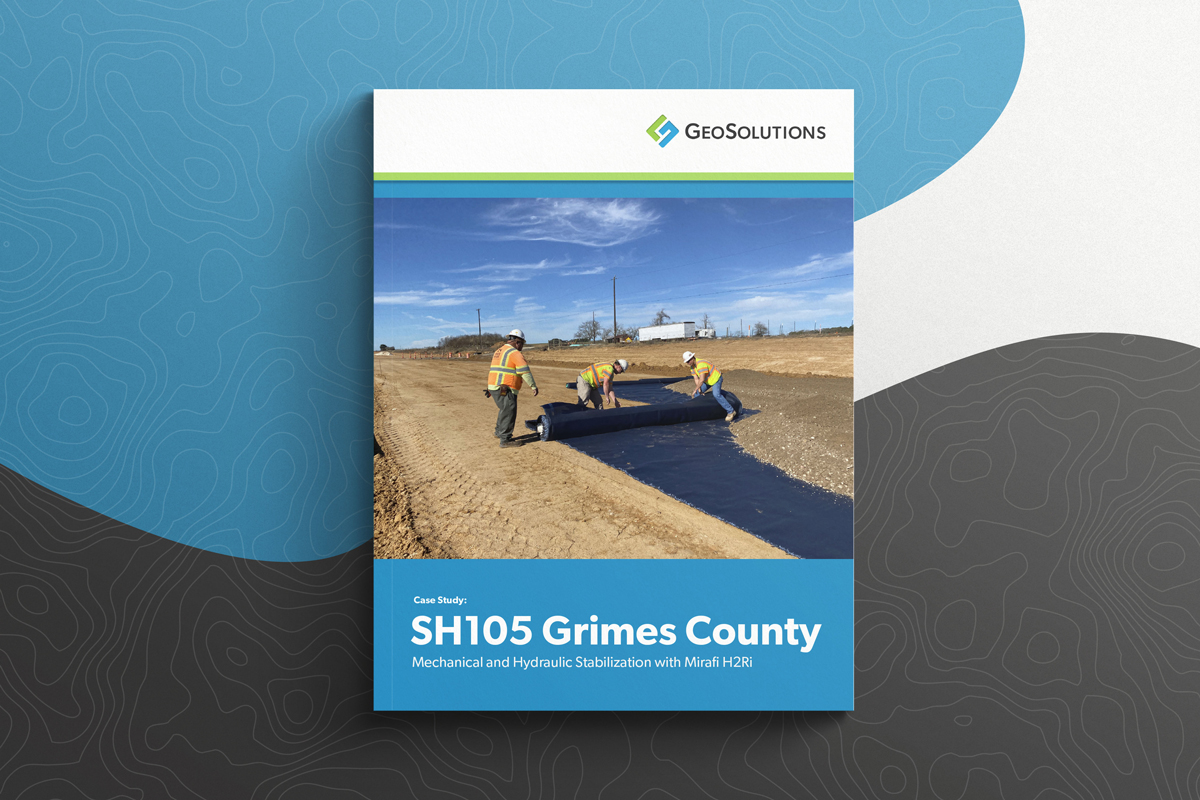
What are geogrids?
By now, you have probably read or heard about the multiple benefits of using geogrids in various types of civil engineering construction applications. The two most significant are the improvement of your construction project's speed and the reduction of your overall cost. But you might still be asking yourself, what exactly are geogrids and how do they create an impact on my bottom line and project's success?
A geogrid is defined as a geosynthetic material consisting of connected parallel sets of tensile ribs with apertures of sufficient size to allow strike-through of the surrounding soil, stone, or other geotechnical material (Koerner 1998). Geogrids provide reinforcement, stabilization, and even filtration when used with properly sized aggregate fills. Made from polymers such as polypropylene, polyethylene, or polyester, they are used widely in civil engineering applications.
Geogrids are deployed for three primary applications:
1. Building firm working surfaces over soft ground conditions
2. Enhance a pavement's service life
3. Reduce the structural cross-section of both paved and unpaved roadways for given service life.
Geogrids have also been proven to significantly improve a pavement's susceptibility to environmental cracking common when building over highly expansive subgrade soils. Geogrids work by interlocking with the granular or soil material placed over them. The open apertures of the geogrid allow for the confinement of material within, increasing the shear strength of overlying granular fill.
There are four types of geogrids Uniaxial, Biaxial, Triaxial (Triax®) and Geogrid-Geotextile Composites. Each designed and manufactured for specific construction applications with various geometric and structural index properties.
Uniaxial Geogrid
Certain Uniaxial (UX) geogrids are oriented along the longitudinal, "machine direction" of an extruded sheet of polymer, thus yielding a grid structure consisting of long narrow ribs. Other products
utilize polyester yarns to render extremely high allowable strengths at deficient strains. Given their unique properties, Uniaxial geogrids are ideal for both wall and slope applications such as
retaining walls, landfill liner systems, embankments over soft soils, and very steep earthen slopes.
Biaxial Geogrid
Biaxial (BX) geogrids are stretched in two directions, the longitudinal and transverse, equally distributing stress along both directions. While woven geogrids are still commercially available, extruded punched-and-drawn geogrids
made of polypropylene are the most deployed among biaxial geogrids. Providing the geogrid with the ability to distribute loads over a wider area than usual while increasing its capacity in base
stabilization applications. Biaxial geogrids are best for applications such as foundations for roadbeds, railroad truck beds, permanent unpaved roads, airport runways, construction haul roads,
working platforms on weak subgrades, and parking lots.
Triaxial Geogrid
TriAx® (TX) geogrids, a next-generation enhancement to biaxial geogrids, have additional diagonal ribs that increase the product's in-plane stiffness. The triangular pattern is formed into a hexagon to improve how the product absorbs
traffic loading forces. TriAx® creates a more efficient effect that delivers optimal in-service stress transfer from the aggregate to the geogrid.
Triaxial geogrids have undergone extensive full-scale and field testing and have been calibrated within the more common pavement design methodologies, both for paved and unpaved roads.
Geogrid-Geotextile Composites
Geogrid-Geotextile Composites are comprised of both material types that are heat or sonically welded together to yield an effective reinforcement and separation element for very challenging
subgrade soil conditions. When subgrade filtration-separation criteria cannot be met with adequately graded fill materials, Geogrid-Geotextile Composites are ideal for deploying. Such that
underlying subgrade soils may be appropriately filtered, thus preventing contamination of the overlying granular fill.
When used for ground stabilization and soil reinforcement applications, geogrids:
• Reduce aggregate layer thickness by up to 50% in unpaved roadways with no performance loss than a standard unstabilized design.
• Increase the life of your road and pavements by reducing the annual maintenance budget, for asphalt course replacement, by over 50%.
• Increase the bearing capacity of weak subgrades, providing enhanced safety and more outstanding seismic durability by stabilizing slopes and increasing soil strength.
• Improve bearing capacity on railway projects and stabilize the rail ballast and track bed, improving performance by limiting the rail ballast movement and displacement. Less maintenance is required over the railway line's lifetime and decreases the amount of foundation material required by up to 30%.
• Provide an excellent alternative to poured concrete for load transfer and working platforms where the subgrade is soft, reducing differential settlement.
Making an informed decision for the use of geogrids in your next project can be challenging based on the numerous variables and options at your disposal. We are here to help you make the right choice when choosing your next geogrid for your next project. So no matter what your sitework challenge might be, we can help you decide which kind of geogrid will be best for you.
Have a question, give us a call and put us to the test.
GeoSolutions provides dependable results for soil stabilization, earth retention, and soil erosion control projects utilizing geotextiles and geogrids, earth anchors, walls and slopes, turf reinforcement, revegetation, containment and geomembrane liners, and more. Contact Us Now
Always be the first to know about new products, resources, and tools that impact our industry and your performance.
FREE Geosynthetics Case Study

Discover how we provided a cost-effective solution to stabilize soft soils below a highway lane widening area. While eliminating the need to cement stabilize the subgrade and allowed the DOT to keep the same design section thicknesses while implementing a solution to address long-term moisture concerns.